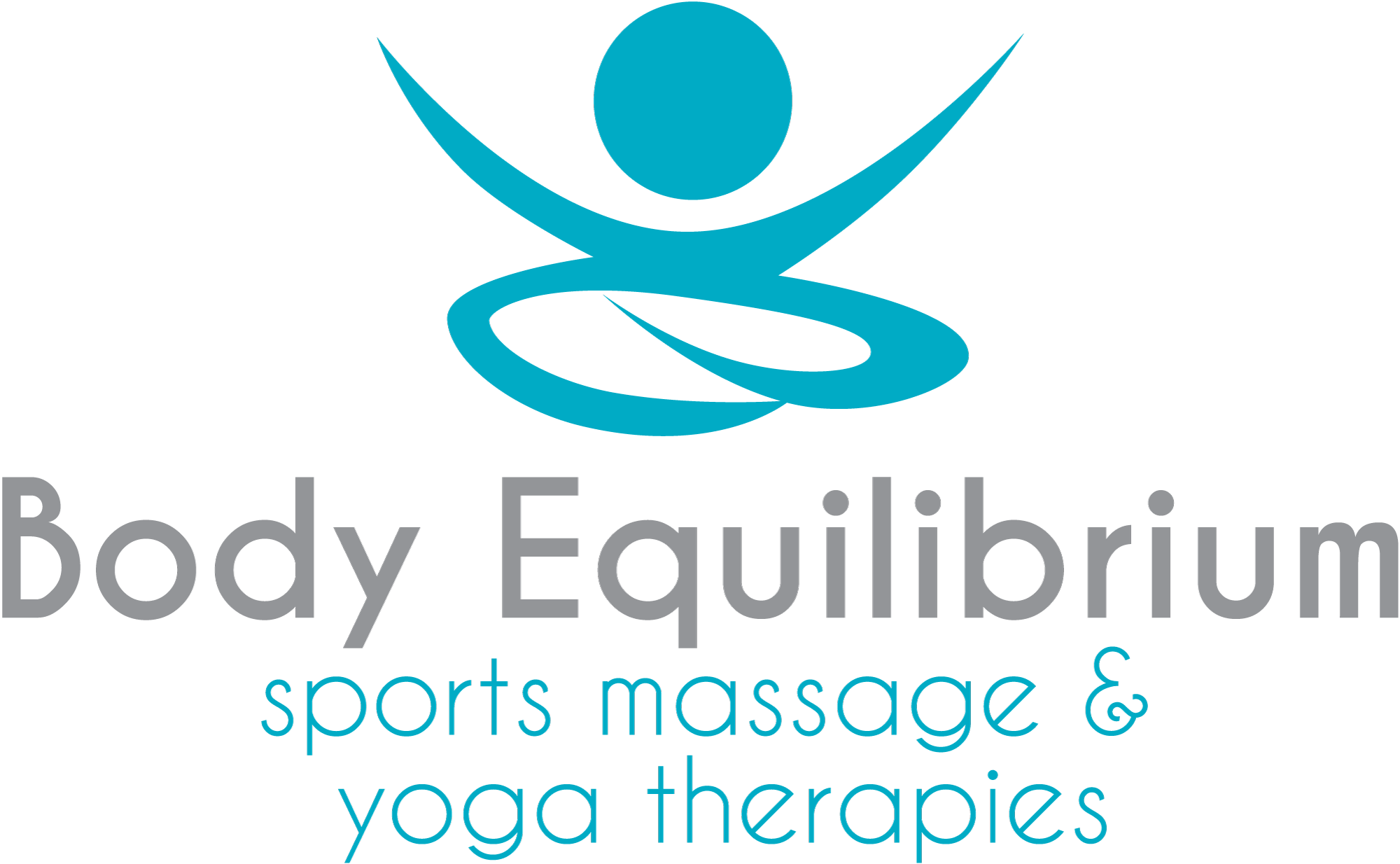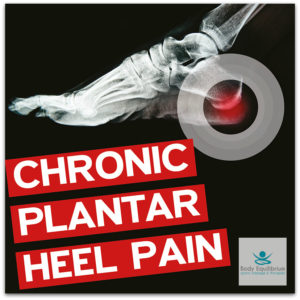
Heel pain, or as it is officially known chronic plantar heel pain (CPHP) is usually a change in the nature of the tissue within the sole of your foot, attaching to your heel bone called the plantar fascia. This structure acts as a strong guide wire between the heel and the big toe as you move through your foot during walking and running.
More rarely, CPHP can affect the heel bone itself, and sometimes the heel pad. In children the condition must be differentiated from growth plate pain in the region (Sever’s disease), and in adults medical conditions such as gout.
What does chronic plantar heel pain feel like?
You notice a dull ache in front and slightly to the inside of your heel which is normally worse in the morning. The pain often gradually reduces after you have taken a few steps. As the condition worsens prolonged standing and walking in general becomes painful. Often you notice that more supportive shoes help, and sometimes the height of the heel of the shoe can affect the condition. It has been described as sometimes feeling like you are stepping on a small stone or marble.
What your therapist can do
Sports massage therapy aims to help the inflamed tissue to recover initially before introducing a progressive rehabilitation programme. The tissue reacts in the way it does giving pain because it has been overloaded. You may have put on weight, increased your activities, or simply spent a long time standing. This causes the tissue to react and if rested it will slowly recover. However, early on it is often not convenient to rest and so the tissue reaction continues and the condition develops.
Initially, we will try to ease pain by allowing the tissue to recover and we could use kinesiology tape and massage to help. We can also discuss things you can do at home to help with pain and talk to you about footwear and planning your day to take strain off your foot.
As the condition begins to resolve and the pain lessens, you will begin to load the tissue in the sole of your foot to strengthen it again. This is vital because scientific studies have shown that without this gradual load increase, the condition can take longer to heal and is liable to recur. The tissue is loaded using special exercises which you will do at home. Your successful recovery from this condition will depend on these exercises. They may cause a little pain (a bit like the aching you get after you have done a good workout in the gym) which is a sign that the right tissues are being targeted. Importantly we’ll explain how to identify the right and wrong amount of pain – one helps, and the other one can make things worse!
What you can do
1. Heel raise actions (also known as plantar fascia loading exercises) in bare feet can help to load the plantar fascia to help recovery. Stand with your hands on a wall in bare feet and slowly flex your foot to lift up onto your toes. As you do this try to keep your heel bones in line, trying not to allow your heel bones to flare outwards, and avoiding a flat foot position as you come back down. Perform about 5-8 repetitions so you feel a little discomfort in the sole of your foot, but not a lot. Rest, and then repeat this action building up to 3 sets of 5-8 reps. Do this each day and build up to twice a day as you are able to do more without making the pain worse.
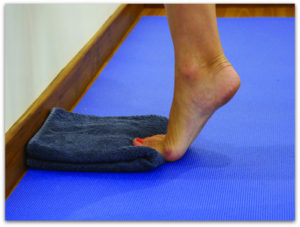
2. Increasing the flexibility of your big toe and stretching your plantar fascia by facing a wall and placing your toe of your affected foot up against the side of the wall and gently leaning in to stretch the fascia. Hold the stretch for 5-10 seconds and repeat 5 or 6 times.
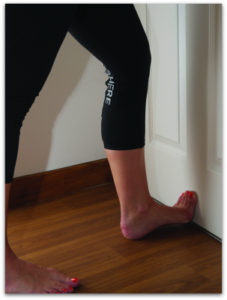
3. Self massage can also help to reduce pain. Cross your painful side leg over the good leg and flex your foot and big toe joint. This position causes the plantar fascia to stand out, allowing you to gently press into it. Press and hold for about 3-5 seconds and then move onto another painful region. Aim to cover a 10 centimetre band from your heel towards your toes.
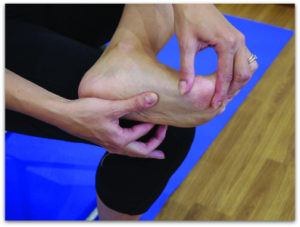
A final word
Most often this condition can be treated without injections or surgery. The key is guided therapy to help strengthen the foot gradually. This may take a long time (up to three months) but remember you will be doing most of the exercises at home. It is really worth persevering with the home exercise programme to build a strong foot and help prevent the condition coming back.
If you suffer from heel pain, we can help. Call us on 07494 100165.
